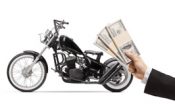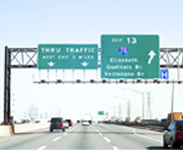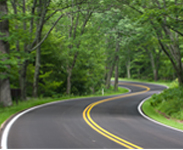Give Me a Brake! Brake Maintenance for Your Motorcycle
That squealing noise is getting unbearable and the bike is just not stopping like it used to! Brakes on motorcycles tend to see a lot of heat. They have small surfaces and a lot of forward force. This causes the brakes to glaze over and warp. Because of this, brake maintenance for your motorcycle is necessary and important. Though brakes are not difficult to change, it is very important that they be done correctly! If brakes are not replaced correctly, the results can be very dangerous and even fatal to the motorcycle operator. DO NOT attempt to change the brakes of a motorcy¬cle unless you are completely confident that you can do it correctly. When in doubt, bring the bike to a professional mechanic.
Brake systems on all modern motorcycles like Harley-Davidson, BMW, Triumph, Honda, Yamaha, Suzuki, Kawasaki, Indian and KTM use disc brake systems. Some even use an anti-lock brake system. Older motorcycles and cheaper motorcycles tend to use drum braking in at least the rear of the motorcycle. Regardless of the style of your brake system, all motorcycle brakes need to be regularly maintained.
The first step in brake maintenance is inspection. Visibly look for something that is wrong with the braking system. If the brake pads wear so thin that metal is touching metal, they need to be replaced. If a brake line is kinked or frayed, it needs to be replaced. If the rotors are scored and warped, they need to be replaced. If bolts are broken or damaged, they need to be replaced as well.
It will be a routine brake job if all but the pads are in good shape. To make sure the brake lever is not compressed during any of the job, stuff something between the lever and grip. An easy trick is to use a rubber tube with zip ties and secure the rubber tube between the lever and grip. The bolts holding the caliper to the fork or rear of the bike can then be removed. Sometimes the calipers may be tight to the rotor; a gentle tap with a mallet should break them free. The pads will then pop out. Some have a retaining clip so be careful and remember how it is to be reattached. A screwdriver or plier can be used to spread the pads to make them easier to remove. Use brake cleaner to clean brake dust and dirt from the calipers. Make sure no rubber components are dry rotted and the calipers are in good condition before reinstalling them.
This site and articles contained herein are provided for general informational purposes only and are not a substitute or intended as professional advice. Please be sure to refer to your owner’s manual or consult a mechanic for information specific to your motorcycle. The information contained on this site and articles contained herein are provided on an “as is” basis with no guarantees of completeness, accuracy, usefulness or timeliness and without any warranties of any kind whatsoever, express or implied. Rider Insurance Company and its affiliates (together, “Rider”) assume no responsibility for any errors or omissions in the content of this site and articles contained herein. Any action taken upon this information is strictly at your own risk and Rider will not be liable for any losses or damages in connection with your use of this site and articles. Additional terms and conditions apply and are available at https://www.rider.com/plymouth-rock-assurance-general-terms-and-conditions/.

The new pads will be thicker so the space between them will be smaller. Use a clamp or pliers to squeeze the caliper open so that it will fit over the rotor. You may need special caliper tools depending on the manufacturer. Once the caliper can be put back into its place, reinsert the bolts. Use lock washers or threadlocker on the bolts: they should never come loose.
If the brake lever pulses while riding, that usually indicates that the rotors are warped. Typically, rotors are attached to the wheel hub with flush mounted bolts. To change the rotors, remove the wheels. Axles pass through the rotors, making it impossible to change them while they are on the motorcycle. With the caliper removed, you can then remove the axle. Depending on the motorcycle, the axle is held by a nut or pinch bolt.
Again, be very careful of the spacers between the wheel hub and fork or swing arm. They must go in exactly the way they came out. The rotor has bolts that go through the hub. Remove the bolts and replace the rotor. Re-install in reverse order.
Some older bikes may have drum brakes on the back. Performing maintenance on them is very similar to drum brakes on a car. In most cases, you will remove the rear wheel to gain access. Drum brakes use brake shoes held in place with springs. Some may operate mechanically or hydraulically. Replace the shoes if they are worn. If the inside of the drum is in bad shape, you may choose to resurface it. If it can’t be resurfaced, it should be replaced. Clean the drum of all debris and dust.
If a brake line is damaged it should be replaced. Most systems use a banjo style bolt connected through the brake line. Replace all crush-washers and install the new brake line. The brake line then needs to be “bled” because it has air in the line. Open the master cylinder and fill to the recommended level. Temporarily put the cover back on and pump the lever or foot pedal. A second person makes this procedure much easier. Attach a clear plastic hose to the bleeder nipple. While holding the lever down, open the bleeder until fluid comes out. Close the bleeder before you let go of the lever and repeat the steps until a solid stream of fluid comes out. The brakes should get stiff. Refill the master cylinder and install the cover.
Brake maintenance is very important. As long as you do this correctly, there should be no issues. Some motorcycles may be more difficult than others, but they share a lot of general characteristics. Brakes only work well if they are maintained. Failure to do so can result in a catastrophic scenario. As stated before, DO NOT attempt to do this yourself if you are not 100% certain you can do it correctly!
Plymouth Rock Assurance is a marketing name used by a group of separate companies that write and manage property and casualty insurance in multiple states. Motorcycle insurance in New Jersey and Pennsylvania is underwritten by Rider Insurance Company. Each company is financially responsible only for its own insurance products. Actual coverage is subject to the language of the policies as issued by each separate company.





